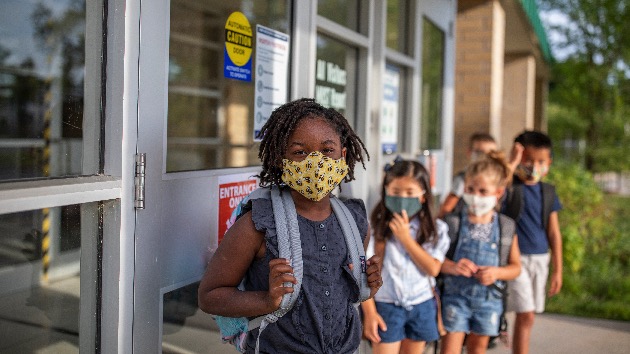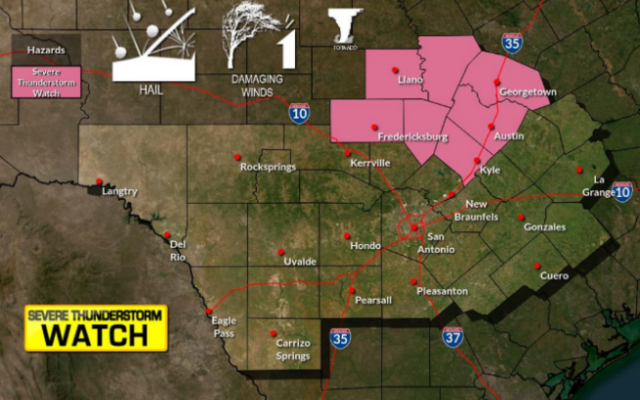Five questions answered for parents about the delta variant in kids

(NEW YORK) — As the number of COVID-19 infections surges across the United States, with unvaccinated children among the most vulnerable, parents across the country are left wondering what decisions to make to keep their families safe.
Adding to the confusion is the fact that the COVID-19 surge, spurred on by the delta variant, is happening as millions of children are heading back to school, forcing kids to brace, along with parents and teachers, for yet another unpredictable, unprecedented school year.
“The way to think about this is, this is a rapidly evolving and dynamically changing situation,” Dr. Jennifer Ashton, ABC News’ chief medical correspondent and a board-certified OBGYN, said. “It requires flexibility and patience and resilience and an open-mindedness to use new data, new information, new knowledge to affect a better health outcome, not only for us as individuals or our children, but for those people around us.”
Ashton, a mother of two college-aged children, said she looks at the latest COVID-19 data not only as a medical doctor, but also as a mother looking out for her children.
“I wear multiple hats,” she said. “I’m speaking to my own children about their behavior, and even though they are both fully vaccinated, what steps can they take to lower their risk as low as possible?”
Here are Ashton’s answers to five of the most pressing questions from parents amid the COVID-19 surge.
1. Why does it seem children are more vulnerable to COVID-19 now, amid the delta variant?
Viruses such as COVID-19 stay alive in their hosts, in this case humans, by mutating, which is what has created the delta variant, according to Ashton.
“The delta variant is one of several variants, you could also think about it as a mutation, compared to the novel strain of the coronavirus,” she said. “And right now, this delta variant definitely appears to be significantly more transmissible … and there is a suggestion that it may be causing more severe illness.”
Currently, only children ages 12 and older are eligible to receive a COVID-19 vaccine in the U.S. Among children younger than 12 and children of any age who are not vaccinated, the data shows an “almost exponential increase” in the number of pediatric cases of COVID-19, according to Ashton.
“The majority [of the cases], 80-90%, are thought to be the delta variant,” she said. “It is unclear at this point if the pediatric age group is more susceptible to the delta variant or if this is just the delta variant doing its thing and attacking the most vulnerable population, which is, in this case unvaccinated children.”
2. Why is there a renewed call for people, particularly children, to wear face masks?
Last month, the Centers for Disease Control and Prevention reversed its mask guidance and recommended that schools embrace universal masks, backtracking on an earlier recommendation that vaccinated students and staff could go without masks indoors.
The American Academy of Pediatrics (AAP), an organization of nearly 70,000 pediatricians, has also called for schools to enforce universal masking mandates.
The reason, according to Ashton, has to do with how much more transmissible the delta variant is than other strains of COVID-19.
“[The CDC] has done outbreak investigations using delta variant data and they have found that the viral load, or the amount of virus that is shed by someone who is vaccinated compared to someone who is unvaccinated, if they’re infected with the delta variant, is largely the same,” Ashton said. “There is very little risk of recommending children of this age group wearing a face covering, and we have seen the impact positive impact of benefits in reducing transmission and infection rates.”
She continued, “It’s always better, especially in the setting of a dramatic increase in case numbers, that we do more and not less, and that’s why you’re seeing these recommendations from the CDC and the American Academy of Pediatrics.”
The need for face mask wearing extends beyond school to family interactions, like when an unvaccinated child interacts with vaccinated grandparents, for example, according to Ashton.
Medical experts also recommend that unvaccinated people, including children, wear face masks in indoor settings and follow other guidelines, like social distancing and hand washing. They also recommend that families who may have children of different ages who are vaccinated and unvaccinated all wear face masks when in indoor settings like grocery stores and schools.
3. How do I know what activities are safe for my children?
Ashton said parents can consider six factors when deciding what activities are safe for their children: Time, space, people, place, vaccination status and mask wearing.
1. Time: “Will your child be in a given environment for a prolonged period of time. Right now, that number, according to the CDC, is set at 15 minutes cumulative time in 24 hours. We know that the more time exposure, the higher the risk.”
2. Space: “How much space will there be between your child and the people that your child will be around? We know three to six feet right now is kind of the number whereby the risk goes up if you’re in that area. It goes down if you’re greater than six feet away, so that’s important.”
3. People: “How much space there is around people in that environment? When you take into account those parameters, that can help you stratify risk.”
4. Place: “Is there ventilation where [your] children are going to be? Is it an indoor setting, which we know has a higher risk in general? Or is it an outdoor setting, where there is a better wind or ventilation? That is very important.”
5. Vaccination status: “Certainly an option for some parents, depending on the age of their children, is to only put their children in environments where they know that the majority or all of the people in that environment are fully vaccinated. That might not be possible if you’re talking about children under the age of 12.”
6. Mask wearing: “That is a variable that is under our control. So even if everyone is not masked, if your child is masked, that can add some degree of added protection.”
4. Why do we seem to have taken several steps backwards in the pandemic?
“We are still learning about this virus,” said Ashton, responding to parents who may be frustrated by the pace of progress more than one year into the pandemic. “We’re still learning about different populations and their risk to the virus and to different variants every single day.”
“As we learn more, we have to maintain the ability to pivot and adapt our behavior, because if you look at this pandemic, and certainly what’s going on right now, there are really just two variables at play,” she said. “There’s the way the virus is behaving, and there’s the way human beings are behaving. It’s challenging enough if one of those variables is changing, but if both are changing at the same time, it can really be a moving target of sorts.”
5. Is the COVID-19 vaccine worth getting now amid the delta variant?
Absolutely, according to Ashton.
“It is critically important to understand that the goal of these vaccines is to save lives and reduce the risk of hospitalizations,” said Ashton. “And even amongst the delta variant, the vaccines are still largely doing their job.”
“That does not mean 100% of the time. That does not mean there will not be breakthrough cases of people that you know, that I know who become infected with COVID-19,” she said. “What it does mean is that the chance of dying of COVID, requiring ICU admission or hospitalization is dramatically reduced.”
Ashton said people who are getting vaccinated are taking the “most critical step” toward protecting not just themselves but also children who cannot yet be vaccinated.
“We have now nine months of personal experience in this country with hundreds of millions of people having been vaccinated with an excellent safety profile,” she said. “Right now [the vaccine] is the best tool we have so not to use it would be a tremendous missed opportunity.”
Copyright © 2021, ABC Audio. All rights reserved.
You Might Also Like



